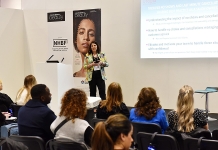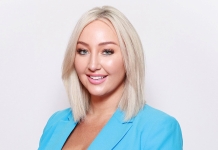Treatments for clients with cancer: are you covered?
Dave Horton explains how ABT members can offer therapies to clients suffering from cancer without concern

As a therapist, your client base will consist of individuals from all walks of life, some of whom are bound to be living with chronic health concerns.
Offering a variety of beauty and wellness treatments can support clients through their illness, making them feel a little more like their old self, and boosting their well-being before, during, and after grueling treatment.
According to Macmillan Cancer Support, it is estimated that by 2020 almost one in two people (47%) will get cancer at some point in their lives*. If one of your clients tells you the unfortunate news that they have been diagnosed with cancer, what do you do? Can you continue to treat them?
If you're an ABT member, then the answer is yes.
If you're carrying out non-invasive treatments for your client's well-being, which includes facials, massage, manicures and pedicures amongst others, then there is no need to be concerned. If you are not an ABT member, you should contact your insurance provider to confirm whether treating cancer sufferers is excluded.
David Balen, of Balens Specialist Insurance Services who work with ABT to provide their members' insurance policy, explains:
“For these non-invasive treatments given for well-being, we have no exclusions in respect of cancer patients. We require that therapists are qualified, and take a case history and keep it for at least seven years, as part of professional and competent practice.”
As ABT members' insurance policy does not exclude clients suffering from cancer, this also means that you don't have to worry if a client tells you during consultation that he or she is in remission or has been cured (however you will still need to note this in your consultation).
Specialist training
It's worth noting that if any specialist training for a therapy for treating people with cancer is available, then it would be a good idea to attend this. Any products used should be checked to see if they are safe on cancer patients as per the manufacturer's guidelines. Your client should also consult their specialist medical practitioner, as per the guidelines provided by specialist cancer support groups etc, and you should record their consent on your client consultation form/card.
Advertising your treatments
The Cancer Act 1939 (Section 4) means that it is against the law to advertise a treatment to the public claiming to cure cancer; this includes giving advice in relation to cancer treatment. You are not a medical professional, and therefore you must not imply that any of the treatments you offer will cure the disease; some of the therapies you are qualified in can assist in easing the side effects of treatments such as chemotherapy or radiotherapy, and help with a client's overall feeling of well-being and self-esteem.
Remember, you should only offer treatments for which you are qualified, and which are accredited by ABT and therefore covered under your ABT insurance policy. If you're unsure, contact ABT's policy team on 01789 773573 or email info@abtinsurance.co.uk
Massage treatments
Via their website, Cancer Research UK offer advice to cancer sufferers about the types of treatments that may be beneficial in helping them to cope with the pain, discomfort and fatigue associated with cancer treatments. Amongst these, massage is recommended. Vitally, they state: “Some people worry that having a massage when you have cancer may make the cancer cells travel to other parts of the body. But no research has proved this to be true.”

Breast Cancer Care concur, stating online: “There is no evidence that massage can encourage breast cancer cells to spread around the body and it's safe to have a massage even if you're currently having treatment such as chemotherapy. In fact, massage can have many benefits for people with breast cancer.”
Cancer Research UK suggest that very deep massage should be avoided, although gentler massage techniques can be helpful and pleasant. Avoid massaging areas of the body on which radiotherapy is being carried out, or where there is any broken or bruised skin.
If a client's arms or legs are swollen due to lymphoedema, you should avoid massaging them with regular massage techniques, say the charity. However, if you are a fully qualified manual lymphatic drainage (MLD) massage therapist, your skills can help lymphoedema sufferers, and patients may be referred to you by a medical professional.
Hands, nails and feet
Chemotherapy treatment can affect nails, making them brittle and cracked. Cuticles may become dry and sore. According to breastcancer.org, clients who have had lymph nodes under their arms removed during mastectomy or lumpectomy need to be particularly aware of nail care, as hangnails or cuts can lead to infection.
Offer you client advice on natural nail, hand and foot care including regular use of a cuticle oil to keep cuticles moisturised. Consider using acetone-free polish remover, and other products that will not dry the nail plate further.
Skincare
Clients undergoing treatment for cancer may find that their skin becomes drier. Therefore, you should take this into account during facial treatments; you are in the perfect position to help your client restructure their facial routines to include cleansers, exfoliators and serums for sensitive skin.
You can also recommend body moisturisers that can help keep skin supple.
Brow reconstruction
If your client is undergoing chemotherapy, it is likely that they will experience hair loss. The powerful drugs used to attack cancer cells also have the same effect on hair roots, and chemotherapy can cause hair on all areas of the body to fall out including eyebrows and lashes.

If you have trained in make-up application, use your skills to show your client how to apply brow powders to recreate eyebrows; today's brow products are highly advanced and help to recreate the lost hair that goes so far in framing the face.
Volunteer your skills
If you would like to use your qualifications to help cancer sufferers on a wider scale, the Look Good Feel Better charity are always appealing for Beauty Volunteers. You need at least one year's experience in skincare or the application of make-up, and be happy to deliver the charity's Workshops and Masterclasses for women across the UK who are undergoing treatment for cancer. Find out more at www.lookgoodfeelbetter.co.uk
Dave Horton is Director of Associated Beauty Therapists (ABT), the industry's leading membership and insurance provider representing over 17,000 clients. For more information telephone 01789 773573, email info@abtinsurance.co.uk or visit www.abtinsurance.co.uk








